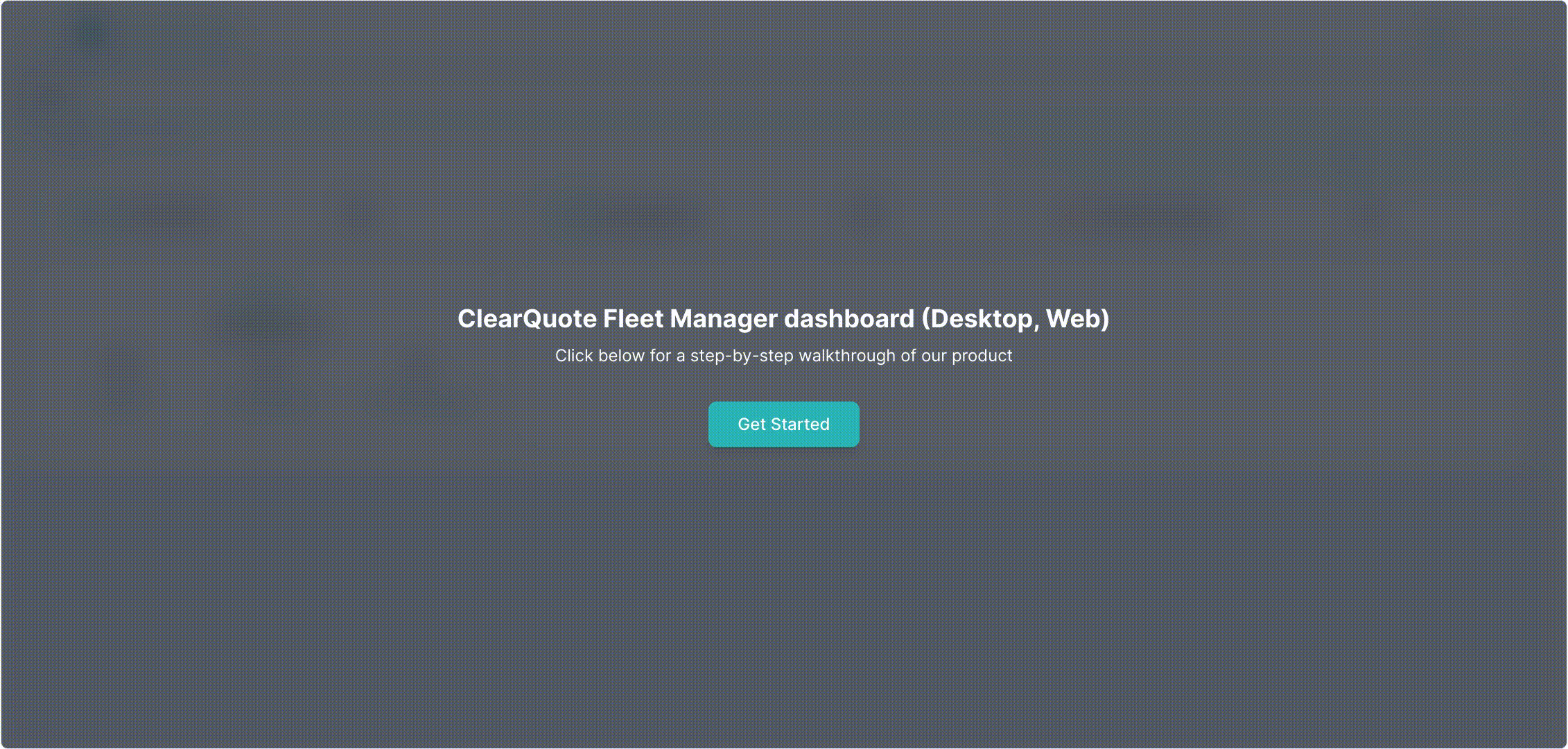Being a fleet manager comes with plenty of challenges. Rising fleet maintenance, repair and fuel costs, keeping drivers safe, and making sure vehicles stay on the road without frequent breakdowns are everyday worries. Imagine having technology that could help you predict vehicle problems, save on fuel costs, and make every trip safer for your drivers. Let us see how AI for fleet management problems can reduce costs and improve fleet efficiency.
So, if you’re wondering, “How is AI used in fleet management?” or “What exactly is fleet AI?”, keep reading – you’re about to find out.
According to a survey conducted by Webfleet, this is how fleet managers are thinking about AI (in the UK specifically).
- Reducing costs and improving efficiency are key for 57% of the respondents, while 47% will focus on improving driver and vehicle safety.
- 58% fleet managers expect it to optimise routes, 51% anticipate safety and maintenance improvements, and 50% predict overall cost reductions.
- 39% of UK managers expect fully autonomous vehicles in 5-10 years
In summary it’s all about how to leverage AI to improve cost efficiency and improve driver and vehicle safety.
Problems faced by fleet managers and AI solutions to tackle those problems
1. Cutting Down on Service, Maintenance and Repair Costs
For many fleet managers, repair costs seem to pile up fast, especially when unexpected breakdowns happen. Unplanned repairs not only increase expenses but also throw schedules off balance, resulting in lost time and sometimes missed deadlines. Each breakdown can feel like a setback, and keeping track of vehicle health across the entire fleet can be overwhelming.
AI systems analyze real-time vehicle data to predict when maintenance is needed. This approach helps prevent breakdowns and reduces unplanned downtime by scheduling maintenance only when necessary, rather than on a fixed schedule.
For instance, Bosch has created a smart system called “Battery in the Cloud” to make managing batteries easier. This connected solution helps batteries last longer and work better while reducing the chances of sudden breakdowns. It also gives a clear picture of the battery’s condition, helping operators spot problems early. This allows them to plan vehicle maintenance ahead of time, avoiding unexpected downtime.
2. Rising Fuel Costs
Fuel is one of the biggest expenses in fleet management, and it’s a cost that seems to be constantly rising. According to a survey conducted by Teletrac Navman, around 47% list fuel costs as their top business challenge. But what if you could reduce fuel waste without cutting back on trips or services? With the help of AI-powered telematics, fleet managers now have new ways to keep fuel costs under control.
How does AI help?
AI-powered telematics systems track driving behaviors like speeding, harsh braking, and excessive idling—habits that can lead to higher fuel consumption. By collecting and analyzing data from each vehicle, these systems help fleet managers identify patterns that waste fuel. For example, a driver who frequently speeds or accelerates quickly will use more fuel than necessary, adding to fuel costs.
Telematics systems can give drivers real-time feedback on their driving habits. For instance, if a driver is idling for too long or driving aggressively, they can receive a reminder to ease off the pedal or turn off the engine when waiting. This helps drivers be more aware of how they’re driving, and even small changes in habits can add up to big savings in fuel.
By combining data and real-time feedback, AI-powered telematics gives fleet managers a proven way to manage fuel costs and promote better driving habits across the board. This simple change helps save money on fuel and reduces wear on the vehicles, keeping the fleet running more efficiently and sustainably.
For instance, Samsara’s vehicle telematics helps you manage fuel and energy use efficiently. It shows clear reports on fuel usage, costs, and emissions for all your vehicles and drivers. You can track idling events in real-time, including how long and where they happen, to reduce wasted fuel and cut emissions. Driver efficiency scores help you understand driving habits that affect fuel use and compare drivers to find ways to save more. Alerts for low Diesel Exhaust Fluid (DEF) levels, idling, and risky driving behaviors like speeding or sudden braking help you control emissions and lower costs. Users have seen 32% reduction in emissions in just three years.
3. Keeping Drivers Safe and Avoiding Accidents
Safety is a top concern for every fleet manager. Accidents aren’t just expensive; they put drivers at risk and can cause serious injuries. So, how can you reduce dangerous driving habits and keep everyone safe on the road with the help of AI?
Heard about AI Dashcams?
Dashcams have evolved from simple recording devices into powerful tools for improving both driver and fleet safety. Modern dashcams—particularly road-facing and driver-facing cameras—are tailored to meet the needs of fleet managers by providing actionable insights into both driver behavior and road conditions.
What Dashcams Do
A fleet dash camera starts recording when the vehicle is turned on and moving. The road-facing cameras capture everything happening around the vehicle, which can help prove what occurred during an incident.
Some driver-facing cameras use AI technology to spot risky behaviors, like texting, eating, drinking, or not paying attention to the road. If these behaviors are detected, the camera sends an alert to the driver, encouraging them to correct their actions and avoid accidents.
These dash camera recordings, when connected to a fleet management system, provide helpful information like time, location, and speed. This data can be used to understand what caused an accident and can protect drivers from false claims.
According to this case study by SureCam, their dash cam solutions are designed to protect fleets and drivers by capturing video evidence of incidents that can help prevent false claims and resolve disputes. For example, video footage from SureCam’s connected cameras has proven fault in accidents caused by improper merging, sideswipes, and even false hit-and-run claims. These real-time recordings provide indisputable evidence that can be used in insurance claims, saving businesses money and ensuring drivers are protected. Additionally, the system helps improve driver behavior by identifying areas for improvement, further reducing the likelihood of future incidents.
4. Eliminating unreported damages
Generally fleets tend to accumulate a lot of damage that builds up over time and is a significant cost to your fleet operation. Imagine this! You or the driver manually check all the vehicles and report damages. There are high chances of missing certain damages.

Wondering what’s the solution for this? With ClearQuote you can eliminate such unreported damages with minimal effort – the app will guide drivers on capturing the right set of pictures of the fleet. Damages are automatically identified using computer vision and Fleet managers get notified in case there are new damages. Request for demo now and see the magic happen!
5. Saving on Insurance Costs
Insurance is an important cost for any fleet, but it can also be a heavy burden, especially if your fleet has a history of accidents or risky driving. But what if there was a way to reduce those insurance costs?
How does AI help?
With AI-powered telematics systems, you can track how your drivers are behaving on the road. It also helps you save money by reducing your insurance premiums. Better driving leads to safer roads and lower costs for your fleet.
One such example is Flock. Flock offers insurance for fleets using real-time data from telematics systems. Here’s how it works:
- Telematics Integration: Flock connects with telematics devices to monitor how the vehicles are being driven. This includes hard braking or speeding and understanding environmental risks, such as accident-prone areas.
- Risk Assessment: The data collected from telematics is analyzed to understand how risky the fleet’s driving patterns are. This helps Flock determine a fair insurance premium based on actual driving behavior rather than a fixed rate.
- Dynamic Pricing: If the fleet operates safely, Flock adjusts premiums to reward good driving.
- Accident Prevention: By identifying risky behaviors and patterns, Flock shares insights with fleet managers to improve driver safety through coaching. This proactive approach helps reduce the number of accidents.
- Claims Management: In case of accidents, telematics data provides detailed evidence about what happened, making claims faster and more accurate while reducing disputes.
By encouraging safer driving and providing discounts for good performance, Flock helps fleets save money on insurance while improving overall safety and efficiency.
Hold on….
That’s just an overview into the potential of AI for fleet management problems! But don’t think that’s the end of the road—we will be delving deeper into some of these areas in our upcoming blogs..



